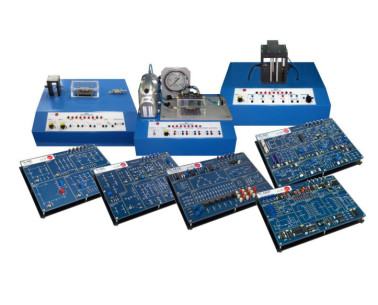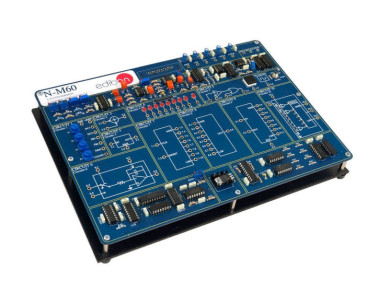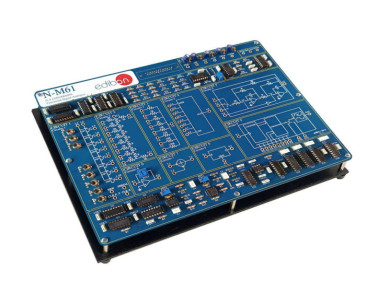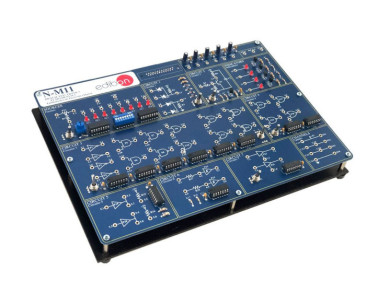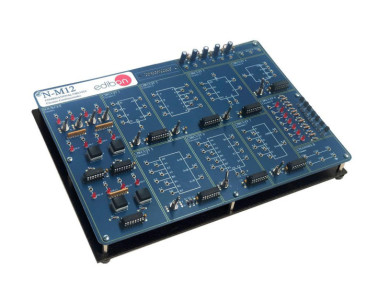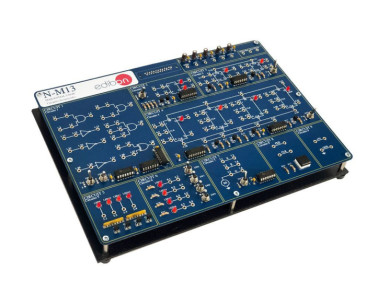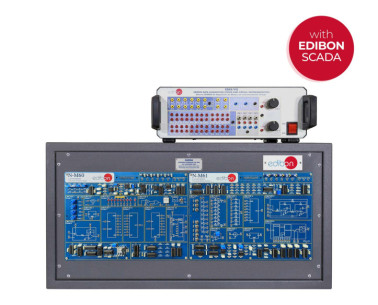TDS デジタル信号処理学習用コンピューター制御指導用装置
革新的なシステム
The Computer Controlled Teaching Unit for the Study of Digital Signal Processing, "TDS", designed by EDIBON, allows to understand the principles of digital signal processing and signal analysis.
研究室
関連ニュース
概要
The Teaching Unit for the Study of Digital Signal Processing "TDS" allows to study the principles and more important concepts about digital signal processing, including study and practical exercises, among others, of:
- Continuous waveforms generation.
- Analyze the nature of the signals.
- Working simultaneously with two external signals.
- Signals digitalization.
- Fast Fourier Transform visualization.
- Study of the effects of the digital signal processing.
- Study of the effects of the analog and digital filters.
- To analyze the time and frequency responses, before and after the digital signal processing.
- Behaviour of the generated signal or the user’s voice when noise is added to the signal, etc.
- Moreover, it is possible to generate different waveforms by the software and send them to the outputs of the unit. These signals can be visualized by an external oscilloscope or be listened by the speaker.
The "TDS" unit is based on a modular design structure to allows the user a better understanding of the unit. This unit includes the followingmodules:
- Two Function Generators modules: Each function generator contains a waveform selector to choose one of the three different waveformshapes (sine, triangle and square) and three potentiometers to regulate the frequency, the amplitude and the duty cycle of the signal.
- Noise Generator module: It includes two different noise generators: white noise and pink noise. Each noise generator includes a potentiometer to regulate the amplitude of the noise signal.
- Microphone and Microphone Pre-Amplifier module: It allows to record and adapt the user´s voice to be analyzed with the software ofthe unit.
- PC Inputs/Outputs module: It allows to connect the unit with the data acquisition board (to be placed in the computer) and shows theacquired signals in the unit software. This module contains two BNC connectors for signal inputs and two BNC connectors for signal outputs.
- Power Amplifier module: It contains a potentiometer to regulate the power amplification of the signal.
- Speaker module: It allows to hear the generated signals of the unit and to study the effects of the noise and digital signal processing in the studied signal.
All connections between modules are performed through RF coaxial cable assembly.
This Computer Controlled Unit is supplied with the EDIBON Computer Control System (SCADA), and includes: The unit itself + a DataAcquisition Board + Computer Control, Data Acquisition and Data Management Software Packages, for controlling the process and allparameters involved in the process.
演習と指導の慣行
マニュアルに含まれるガイド付き実習
- Continuous wave form generation, with the possibility of varying the frequency and amplitude of signals, besides of duty cycle.
- Characterization of signals. To analyze the nature of the signals: sine, square, triangular, etc.
- Working simultaneously with two external signals.
- Generating signals directly by the software and send them to the unit outputs and then visualizing or listening by the speaker or an external oscilloscope.
- Signal digitalization, permitting the most suitable sampling time, avoiding "aliasing".
- Digitalization of signals with the possibility of adjusting the sampling frequency.
- Fast Fourier Transforms (Power Spectrum).
- Addition, subtraction and multiplication of signals.
- Study of "aliasing".
- Study of different noise types:
- White noise.
- 1/ƒ noise.
- Study and use of filters:
- Possibility of filtration of any signal.
- Reconstruction of signals through the application of filters.
- Digital filters: Finite Impulse Response (FIR) Filters and Infinite Impulse Response (IIR) Filters.
- Analogue filters:
- Butterworth, Chebyshev, etc.
- Possibility to use Bartlett, Hanning, Hamming, Kaiser, Parzen, etc. windows for applying on the signal.
より実用的な練習をして、ユニットを完成させる
- Many students view results simultaneously. To view all results in real time in the classroom by means of a projector or an electronic whiteboard.
- The Computer Control System with SCADA allows a real industrial simulation.
- This unit is totally safe as uses mechanical, electrical and electronic, and software safety devices
- This unit can be used for doing applied research.
- This unit can be used for giving training courses to Industries even to other Technical Education Institutions.
- Several other exercises can be done and designed by the user.
補完的な機器
アナログ-デジタル変換器モジュール
デジタル-アナログ変換器モジュール
デジタルシステムおよびコンバータモジュール
デジタル電子学の基礎モジュール
基本的な組み合わせ回路モジュール
基本的な順序回路モジュール
コンピュータ制御によるA/D、D/Aコンバータユニット(PC)
品質

アフターサービス

 クッキーの設定
クッキーの設定













